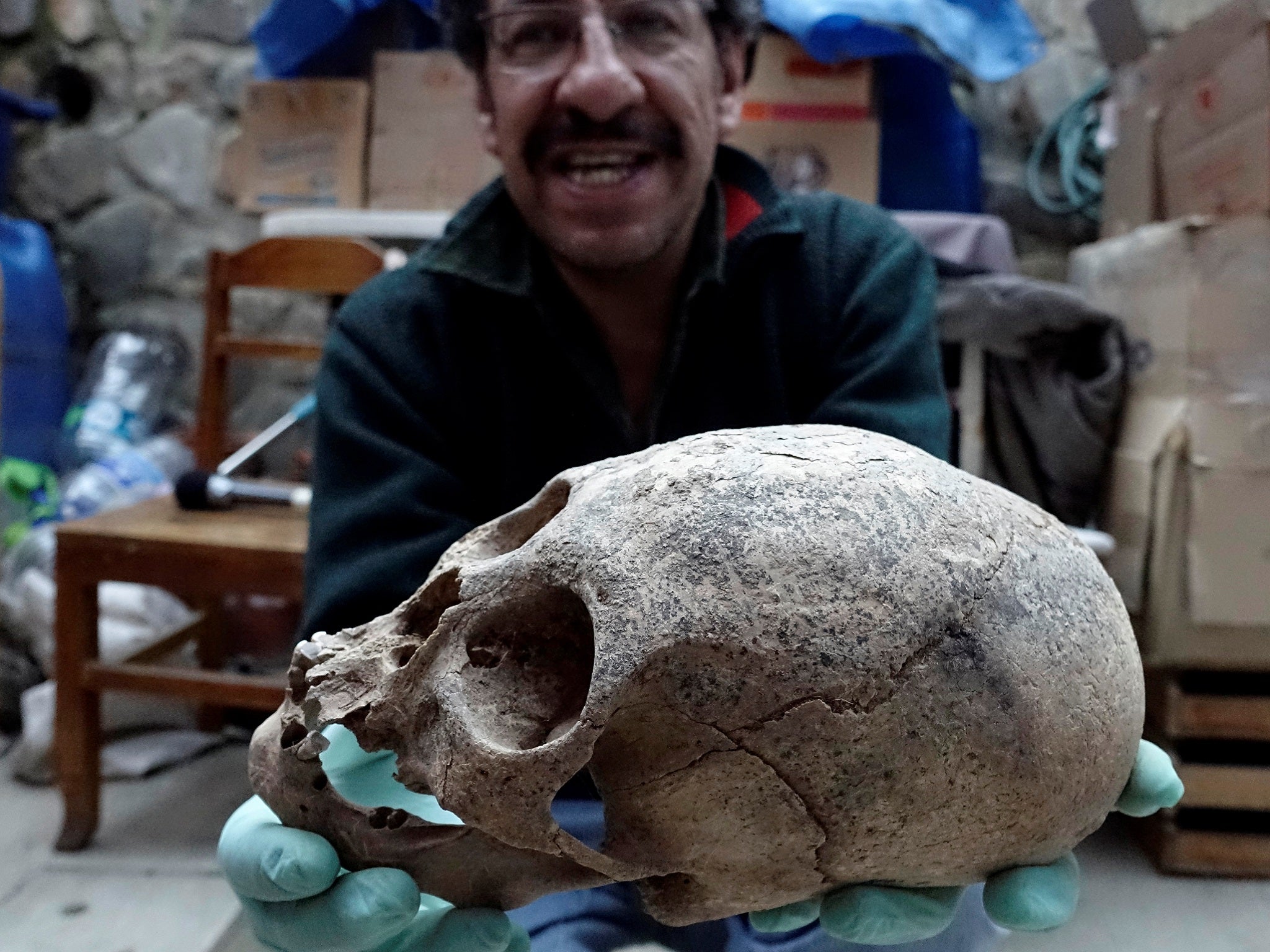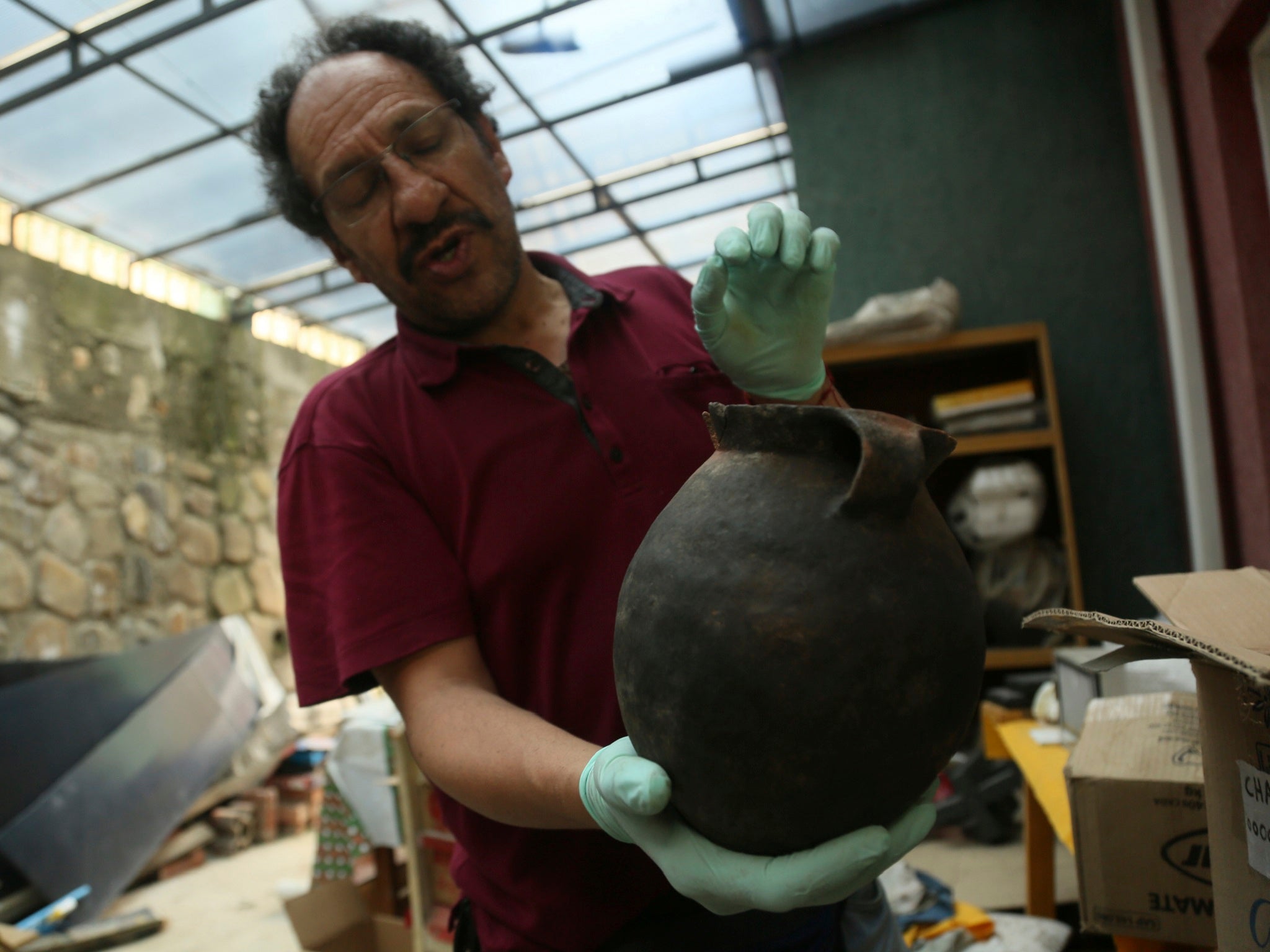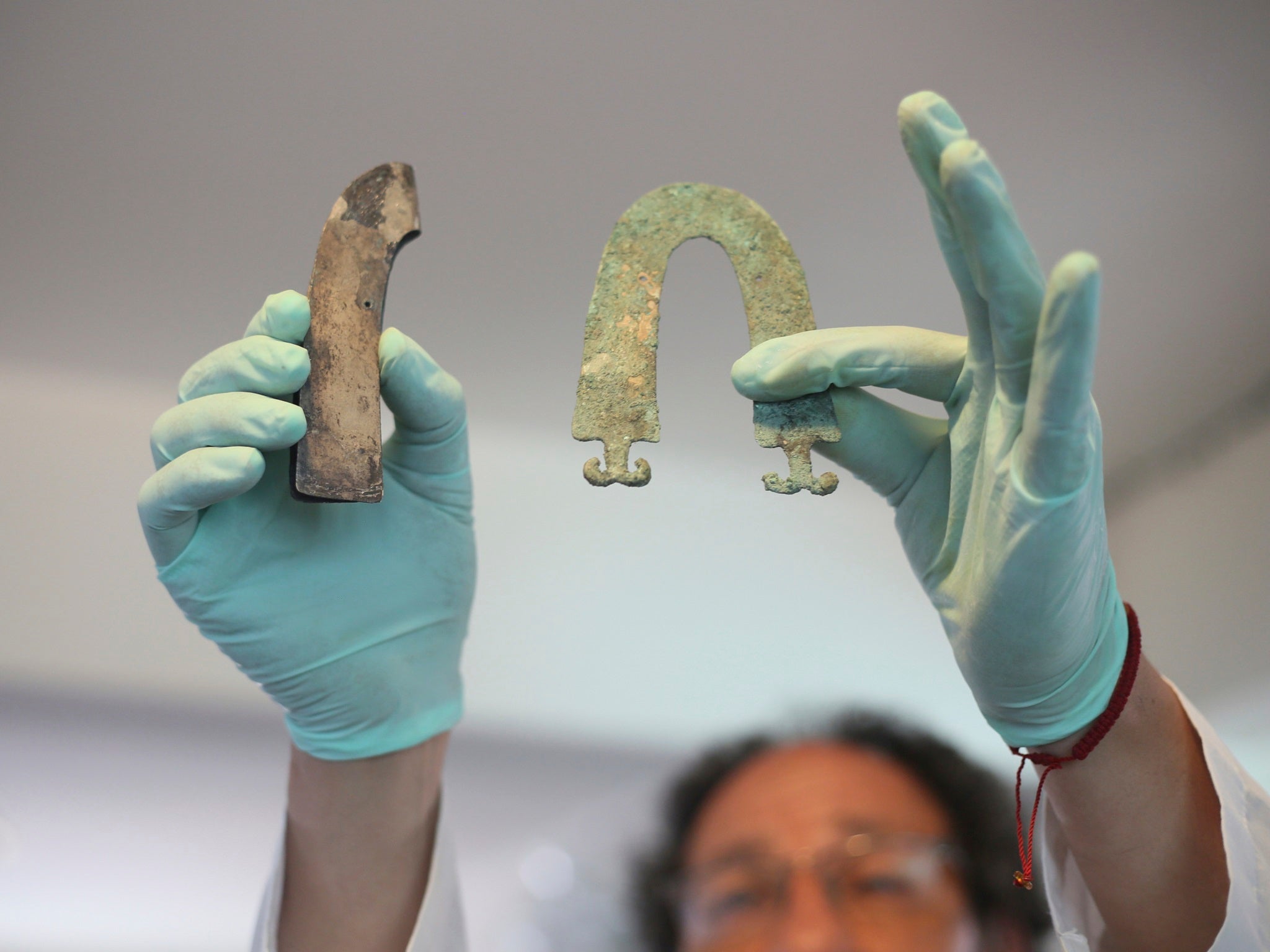Bolivian tombs reveal human remains and Inca artefacts from 500 years ago
Tombs contained remains of more than 100 people and vessels used by Incas for performing death rites

Your support helps us to tell the story
From reproductive rights to climate change to Big Tech, The Independent is on the ground when the story is developing. Whether it's investigating the financials of Elon Musk's pro-Trump PAC or producing our latest documentary, 'The A Word', which shines a light on the American women fighting for reproductive rights, we know how important it is to parse out the facts from the messaging.
At such a critical moment in US history, we need reporters on the ground. Your donation allows us to keep sending journalists to speak to both sides of the story.
The Independent is trusted by Americans across the entire political spectrum. And unlike many other quality news outlets, we choose not to lock Americans out of our reporting and analysis with paywalls. We believe quality journalism should be available to everyone, paid for by those who can afford it.
Your support makes all the difference.Tombs containing human remains and Inca artefacts from more than 500 years ago have been discovered in Bolivia.
Archaeologists say the remains, which were found at a quarry about 12 miles from La Paz, belonged to more than 100 people from an indigenous civilisation.
They were buried with more than 30 vessels used by the Incas for performing death rites.
“The vessels are whole and are Incan,” said Jedu Sagarnaga, an archaeology professor at Universidad Mayor de San Andres, who led the investigation.
The site near the modern-day town of Viacha also contained elongated skulls that may have been stretched to differentiate the social rank of individuals, he said.
The cemetery carved into limestone appears to have been built by the Pacajes people, whose cities were conquered by the Incas towards the end of the 15th century.

The Pacajes formed part of the Aymara kingdom and developed around the year 1200 after the decline of the Tiwanacu people in the Andean highlands.
Julio Condori, an archaeologist who runs the Archaeological and Anthropological Research Centre in Tiwanacu and was not involved in the excavation, said: “This finding reaffirms our identity and culture and shows that not only was there an influence from the Incas, but from other people as well.”
Bolivian Minister of Culture Wilma Alanoca called it an “unprecedented discovery”.

The site was excavated months ago, but the findings were not made public until this week.
Mr Sagarnaga said that in addition to the bones, the burial site held more than 150 decorative bronze objects including necklaces, bracelets, ornaments for women’s hair, large broaches, and two horseshoe-shaped headbands used by nobles.
“These were personal favourites of the deceased, whereas the vessels were more for the community,” he said.
The archaeologist said the site had been looted in the past, but the tombs were interesting because they held the remains of men and women from different social status.
The remains were taken to an archaeological centre for further study and will eventually be returned to a museum in Viacha.
Join our commenting forum
Join thought-provoking conversations, follow other Independent readers and see their replies
Comments